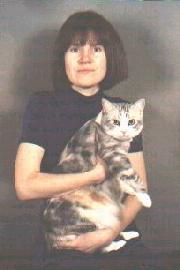To clone or not to clone

by Emily Monroy
July-October 2005
The picture in the paper immediately caught my eye: a blonde with an adorable tabby kitten in her arms. The cat, Little Nicky, had the distinction of being the first commercially cloned feline. His owner, a Dallas resident named Julie, paid $50,000 US to get her late cat Nicky (Big Nicky) cloned. The procedure was made possible through Genetic Savings & Clone of California.
In the last few years, the cloning of animals – and potentially of humans – has sparked a heated debate throughout the world, particularly after the first cloned animal, the sheep Dolly, made her appearance in 1997. Many religious leaders, for example, have condemned the practice as contrary to the will of God. Other individuals, though, have hailed it as a sign of scientific progress.
I was a little shocked at the woman’s decision to pay $50,000 to clone her cat. In a democracy, however, we are all free to spend our money as we see fit, no matter how frivolous or outlandish the purchase. For instance, nothing is stopping me from spending $10,000 on lipstick (for the record, I don’t wear make-up at all).
While I don’t have any legal problems with cloning, I do have some ethical ones. First of all, if Julie wanted another cat so badly, why didn’t she adopt one from an animal shelter? Going through the drastic step of cloning an animal when there are so many in need of homes can’t help but strike me as somewhat immoral.
I also have psychological misgivings about cloning. It seems that people who clone a pet in the hope of making him or her “live forever” are denying the fact of death. All living creatures die at some point. Most of the time, we outlive our pets. It is natural to want to “hang on” to them, because the loss of an animal, or even the thought of losing one, is hard (I know; my cat Claudia died last year). But owning a pet involves accepting the realities of nature, including death.
I am sceptical as well of the notion that a cloned animal can truly replace the original one. Just because the two have the same genetic makeup does not mean they are “identical.” A well-known example of two individuals who shared the same genes but had very different personalities is that of Chang and Eng Bunker, the original Siamese twins. Chang was essentially an alcoholic, whereas Eng did not drink at all. By the same token, I wonder whether if I cloned my cat Mama her clone would love catnip as much as she does. So by cloning your pet, will you really be getting the same animal as before?
When my cat Claudia died I had her cremated and put her ashes in a vase that now sits on my desk. I also have a photograph of her on the mantlepiece. But even these tangible reminders of her don’t compare with the memories of the fun and happy times I had with her. And although I adopted another cat afterwards, this cat did not “replace” Claudia. Nobody could – not an unrelated animal, not a brother or sister of hers, not a clone. Every animal, and person, is a unique individual. Perhaps the best way to make our pets “live forever” is to cherish them while they are alive and remember them after they die.
Emily Monroy is a professional translator and is of Irish, Italian and Norwegian descent. Born in Windsor, Ontario, she now resides in Toronto. Her articles have appeared in several publications, including Interracial Voice, Cats Canada, and Urban Mozaik. She welcomes feedback on her articles. You can contact Emily here.
{jos_sb_discuss:10}

